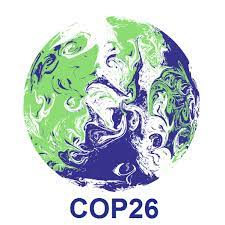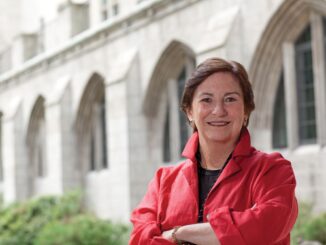
By Staff Writers: Azhley Rodriguez, Rachel Huser, Daniela Tovar-Miranda
Contributing Writer: Tony Dellocono
Thousands of climate activists as well as world leaders gathered on the streets of Glasgow, Scotland, for the highly anticipated COP26 from Oct. 31 to Nov. 13, 2021.
COP26, officially known as the 2021 United Nations Climate Change Conference, was a gathering of world leaders and climate specialists with the goal of limiting the effects climate change will have on the world in years to come.
The specific goal of the summit meeting was to limit the rise in the global temperature to 1.5 degrees Celsius above pre-industrial levels to prevent catastrophic natural disasters. This international meeting had become highly publicized because many world leaders have not taken action in the past, despite time against irreversible climate damage running out quickly.
Greta Thunberg, a Swedish activist known for starting the climate movement Fridays for Future, described the meeting as a “failure” before it even began due to world leaders prioritizing profit from the exploitation of nature’s resources over action against climate change.
Despite criticism from Thunberg and numerous other climate activists from around the globe, world leaders have claimed that the summit has been productive. U.S. climate envoy John Kerry claims that more money is being invested into renewable energy than ever before.
Johan Rockstrom, one of the most influential climate scientists in the world, announced very promising developments in reducing methane emissions and reversing deforestation by 2030. Overall, it will take years to prove if Thunberg’s criticism was correct. However, the developments made from COP26 could be one last effort to manage the devastating effects of climate change.
When focusing on the U.S., President Joe Biden had hoped to attend COP6 with clean energy legislation already passed so that the country could model strong commitment to climate change mitigation.
Meanwhile, the United States is still dealing with its own major climate decisions. The House of Representatives last month passed a $1 trillion infrastructure bill to rebuild the public works system, expand access to high-speed internet service and fund new climate resilience initiatives.
However, this came at the expense of putting a larger social safety net and climate change bill on hold.
The newly passed infrastructure bill includes the largest U.S. investment to prepare for climate change. $50 billion will be used to help communities deal with extreme weather situations, like fires, floods, storms and droughts.
The Forest Service will receive billions of dollars to reduce the effects of wildfires. Modernization of the country’s power grid will cost $73 billion to carry renewable energy. Finally, Bureau of Indian Affairs will also receive $216 million for climate resilience and adaptation efforts.
This infrastructure bill has been on the agenda since August. “These bills are so massive that it takes a while to get them passed,” said Patrick Homan, associate professor of political science at Dominican University. Homan stated that a lot of obstacles stood in the way of passing the bill. “It’s all about price tags,” Homan said.
Left-leaning politicians tend to want to spend more money while more moderate politicians are reluctant, said Homan. Polarization is another issue that prevented the bill from being passed.
“Going green is a challenge,” he said. “But countries have to buy in because climate change is a global issue.”
The House of Representatives also passed the Build Back Better Act last month. The Senate will vote on the bill before Christmas break. Two Democratic senators, Sen. Joe Manchin of West Virginia and Sen. Kyrsten Sinema of Arizona, may not support it and the Democrats cannot afford to lose any more votes.
This bill includes additional provisions: the Civilian Climate Corps is an organization that would hire young people to work on climate mitigation projects.
Homan emphasized that world leaders need to listen to the voices of young people as they are the driving force behind climate change activism.
Many young people are seen getting more involved with climate and sustainability efforts across college campuses. Triton College in the River Forest area gears its sustainability efforts toward their education and community.
According to the sustainability page on Triton’s website, “The Triton College Sustainability Center aims to expand training and employment opportunities while improving community and environmental health.”
To Triton, sustainability is important in their education, their campus and community environment. On campus, Triton “partners with responsible companies to collect, reuse and recycle these items” such as electronics.
According to Emily Black, Triton’s sustainability coordinator, “Triton’s sustainability expands across all departments. Our culinary department has created campus wide goals for composting and are our top leaders in buying zero-waste. Our horticulture department and clubs focus on our natural habitats around campus and focus on many of the organizations we are involved with, such as Bee Campus and Tree Campus. Additionally, not mentioned on our website, is solar. We currently have two patches of solar and another one coming in March!”
The largest club on Triton’s campus is the “Horticulture Club which focuses on restoration of our natural habitats,” Black said. They also host TrashTag days on the first Thursday of every month where students pick up trash in the forest preserves surrounding their campus. Although Triton is not hosting any on campus events surrounding COP26, they do “have a renewable energy program which will touch on this topic throughout the year,” Black said.
Similar to Triton and other colleges and universities, Dominican developed its own sustainability coordinator position in 2011 to oversee a variety of “Green Initiatives” set by the university. The current sustainability coordinator is Mary Sadofsky, who is also the adviser for the student organization SustainDU, which aims to get students involved and familiar with the sustainability goals and initiatives set by the university.
SustainDU has six main points of focus: providing green alternative transportation, supporting the campus bee project, providing green spaces, Campus Supported Agriculture (CSA), teaching students about sustainability and water diversion.
On campus, students, faculty and staff are pushed to recycle, compost, ride bikes, reuse items and conserve resources. At the same time, Dominican has taken steps to reduce its carbon footprint, conserve water and energy, and educate students on ecology and sustainability.
The Sustainability Committee is one committee that actively helps the university to become a green environment by reducing its carbon footprint, conserving water and energy, and educating students on climate change and sustainability.
There are many ways that SustainDU has implemented programs that target its six main focuses. BikeDU and the DU shuttle both encourage students to use public transport instead of depending on a car to get to campus. These two alternatives can lower an individual’s carbon footprint as well as the University’s overall.
Last spring semester, SustainDU started the cleanup effort of the Secret Garden, a patch of ground situated between the Lewis Hall buildings.
Meanwhile, the Beehive project, overseen by Professor Scott Kreher and Professor Ellen McManus, educates students about sustainability and ecology through beekeeping and harvesting honey. The university also has a variety of green spaces and CSA promotes the use of these areas, which includes the DU Greenhouse, the Secret Garden, and more. Finally, the water diversion is implemented by having students compost and recycle through school.
The most recent Green Initiative adapted by Dominican stems from Pope Francis’ encyclical Laudato Si’ text introduced in 2020. Francis’s book highlights a seven-year journey to better the environment and sustainability. The goals are: Respond to the Cry of the Earth, Respond to the Cry of the Poor, Poster Ecological Economics, Adopt a Sustainable Lifestyle, Offer Ecological Education, Develop Ecological Spirituality, and Support Local Communities. These initiatives have even been adapted into a sophomore level seminar that focuses on teaching students about the natural world.
The latest sustainability-related event was on Nov. 12, where students in HNEI 366, taught by Kreher and McManus, hosted a student “Poster Session” to educate community members on sustainability.
Furthermore, during this Fall 2021 semester, there have been several composting events, composting student’s Halloween pumpkins, and disposing food waste in compost, trash or recycling category bins at the Interfaith Thanksgiving Dinner on Nov. 18.
Overall, the 2021 United Nations Climate Change Conference showed people that nations must be a leading example on what needs to be done in order to combat climate change.
At Dominican and other universities, many initiatives such as the development of sustainability programs and courses are underway, but a continuing effort will effectively combat climate issues.
rhuser@my.dom.edu, arodriguez2@my.dom.edu, dtovarmiranda@my.dom.edu, adellocono@my.dom.edu



